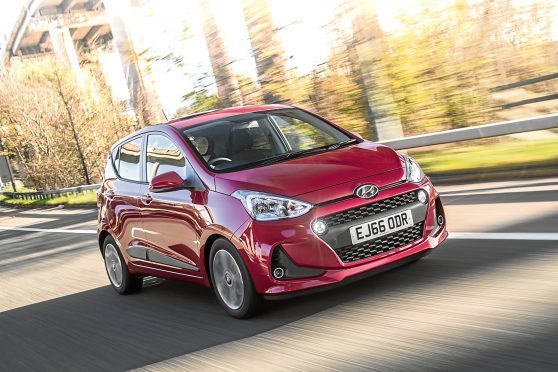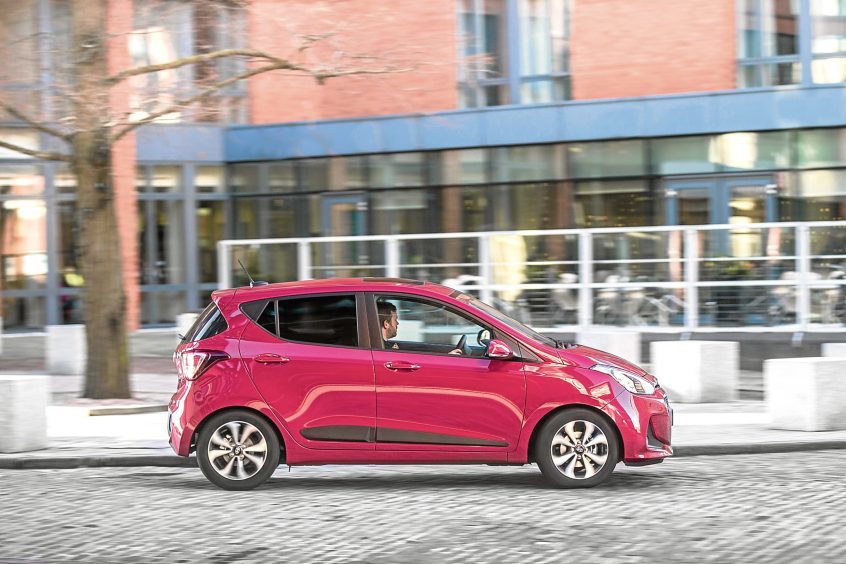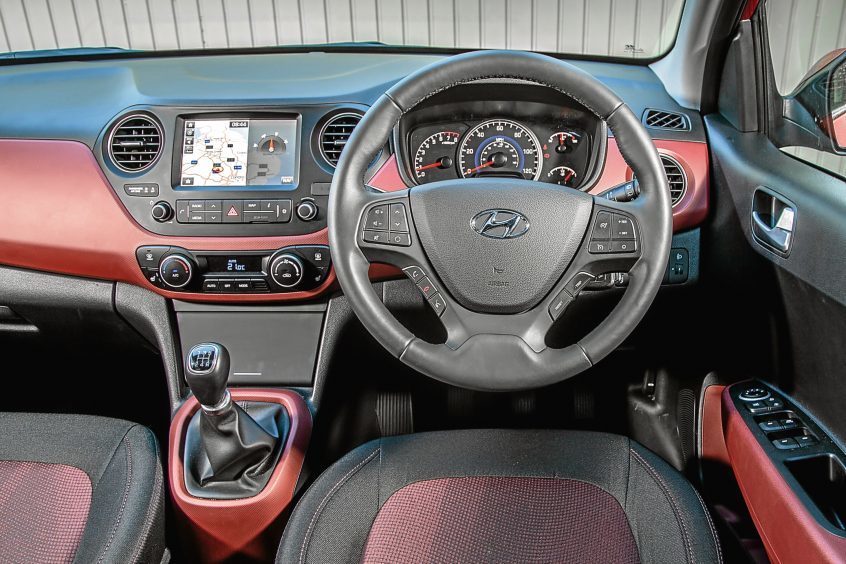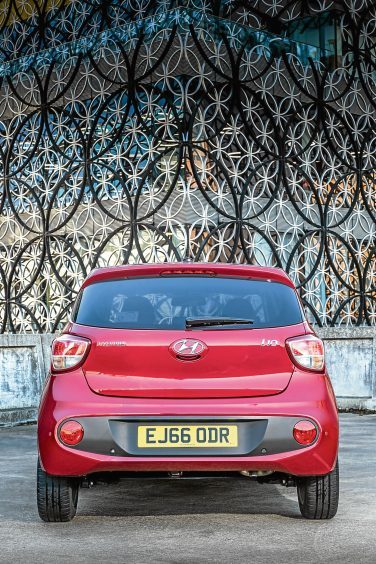The i10 is one of the jewels in Hyundai’s impressive stable of models.
The second generation of the well-packaged, practical city car was named Scottish Car of the Year when it was released in 2014.
It has now received a mid-life facelift that includes a restyle and a raft of technical updates. An improved infotainment system, new grille and daytime running LEDs are among the highlights.
Prices start around the £9,500 mark, making it one of the most affordable city cars. It’s also one of the most practical. Hyundai has kept the stubby but tall shape that has served it well. That translates to a lot of internal space given its small footprint.
Unlike many rivals, including the Skoda Citigo and Volkswagen Up, there are three seats in the back and, at 252 litres, the boot is generous too.
As is the case with an increasing number of manufacturers, Hyundai has abandoned the three-door format, figuring people aren’t keen to tip front seats forward and clamber into the back.
It also hasn’t bothered with diesel power – which is probably just as well, considering the bad news for the fuel in the Chancellor’s budget last week.
There are just two petrol engines on offer: a 65bhp 1.0 litre and a 1.2 litre unit with 86bhp. Trim levels range from the S entry-model, through SE, SE Blue up to the Premium and Premium SE trim levels.
I spent a week driving the range topping 1.2 litre Premium SE model, which costs £13,350. It comes with the kind of luxuries that used to be the preserve of executive cars: a heated steering wheel and sat nav among them.
The i10 was one of the first city cars to have a “big car” feel. Even heading along the A9 at nearly 70mph it doesn’t feel flimsy or unstable. Indeed, refinement is as good as most cars from the class above.
The 1.2 litre engine has enough power to cope even with a full complement of passengers and unless you have a very heavy right foot, fuel economy should hover around the 50mpg mark.
It handles tidily enough too and, of course, excels round town, where its light steering and zippy nature come into their own.
It drives nicely enough, it’s practical and it doesn’t cost the earth to buy. It’s also cheap to run and insure and, thanks to Hyundai’s five-year warranty, you’re covered if things go wrong.
The i10 makes a very good case for itself.
Price:
£13,350
0-62mph:
12.1 seconds
Top speed:
109mph
Economy:
57.6mpg
CO2 emissions:
114g/km



